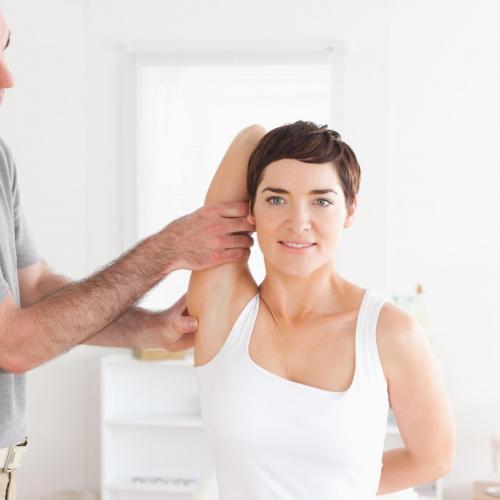Orthotics are shoe inserts used to correct abnormal foot posture or irregular walking patterns. Using orthotics make standing, walking, and running more comfortable and efficient by slightly altering the angles at which the foot strikes a walking or running surface.
Orthotics takes various forms and is constructed of various materials. All are concerned with improving foot function and minimizing stress forces that could ultimately cause foot deformity and pain. Strains, aches, and pains in the legs, thighs, and lower back may be due to the foot's abnormal function or a slight difference in the length of the legs. In such cases, orthotics may improve or eliminate these symptoms, which may seem only remotely connected to foot function.
Foot orthotics fall into three broad categories: those that primarily attempt to change foot function, those that are primarily protective, and those that combine functional control and protection.
Rigid Orthotics
Rigid orthotics are designed to control function, made of a durable material such as plastic or carbon fiber, and is used primarily for walking or dress shoes. These devices are long-lasting, do not change shape, and are usually difficult to break. Generally fabricated from a plaster of paris mold of the individual foot, the finished device typically extends along the heel's sole to the ball or toes of the foot. It is worn mostly in closed shoes with a heel height under two inches. Because of the nature of the materials involved, minimal alteration in shoe size is necessary.
Soft Orthotics
Soft orthotic devices help to absorb shock, increase balance, and eliminate pressure off uncomfortable or sore spots. Soft orthotics are constructed of soft, compressible materials and may be molded by the foot's action in walking or fashioned over a plaster impression of the foot. Also worn against the sole, it usually extends from the heel past the ball of the foot to include the toes. It is particularly useful for arthritic and grossly deformed feet, where there is a loss of protective fatty tissue on the foot's side. It is also widely used in the care of the diabetic foot. Because it is compressible, the soft orthotic is usually bulkier and may require extra room in shoes or prescription footwear.
Semi-Rigid Orthotics
Semi-Rigid orthotics provide dynamic balance of the foot while walking or participating in sports. This orthotic is not a crutch, but an aid to the athlete. Each sport has its demands, and orthotics must be constructed appropriately with the sport and the athlete taken into consideration. This functional dynamic orthotic helps guide the foot through proper functions, allowing the muscles and tendons to perform more efficiently. The classic, semi-rigid orthotic is constructed of layers of soft material, reinforced with more rigid materials.
Other Orthotics
Various other orthotics may use multidirectional or edge-control sports by casting the foot in the ski boot, ice skate boot, or inline skate boot. Combinations of semiflexible material and soft material to accommodate painful areas are utilized for specific problems. Research has shown that back problems frequently can be traced to a foot imbalance. Your podiatric physician needs to evaluate the lower extremity as a whole to provide for appropriate orthotic control for foot problems.
Orthotic tips:
- Wear shoes that work well with your orthotics
- Bring your orthotics with you whenever you purchase a new pair of shoes
- Wear socks or stockings similar to those that you plan on wearing when you shop for new shoes
- Return as directed for follow-up evaluation of the functioning of your orthotics. This is important for making certain that your feet and orthotics are functioning properly together




